

by Rudolf Baumueller, USA
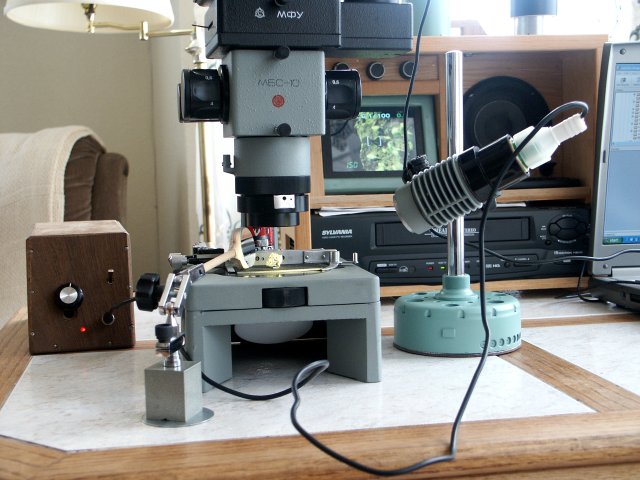
I am trying to take photomicrographs of some crystals that are located inside a small cavity in a rock. I am at this job now for a few weeks, and it is very hard to get enough light inside that little cave, since it is only 0.9 mm across the widest point. The crystals are inside and the rock is opaque, it will not let any light through. The inside walls are white and the crystals are glass clear made of 6 sided rods.
The lamp that comes supplied with the MBC-10 stereo microscope needed a solid support and not attached to the microscope to make it more flexible. So I went to my friend who fixes motorcycles, and asked for something round and heavy, and he gave me an old flywheel, that is ideal, all I had to do is to drill the rivets out, and reverse the center part, that goes onto the crankshaft.
I used all the attachment parts of a machinist dial caliper, minus the magnet and the dial caliper. This can be bought very reasonably made in China. I found a nut, that fitted the threads on the upright rod, and all I had to do is grind that nut down, until it fit inside the center, where the crankshaft fitted before. The original lamp holder needed a little bit of drilling out to be able to get the thumbscrew through the clamp. After that I just gave it a paint job and glued a soft plastic foam bottom on, to make it friendlier to your table top.
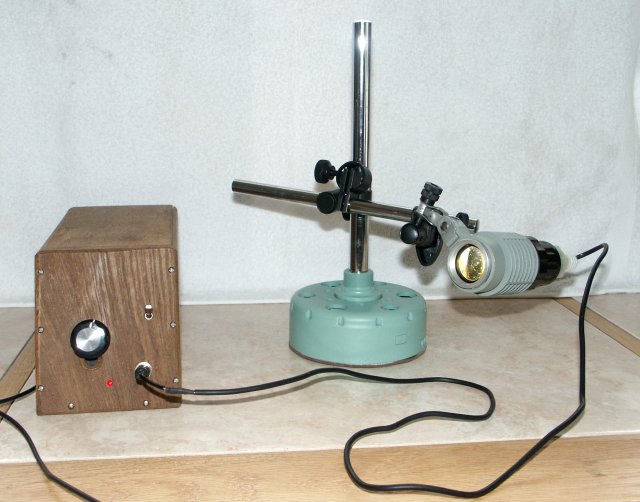
Now that I have the Lamp, I want to use a small first surface mirror to direct the light into that cavity, I did alright holding the mirror by hand, but there is a better way, in the form of another dial caliper holder. This time a smaller one and I used the magnetic base as well, only I set it onto a big washer for better stability. The mirror is secured to a fork of oak with epoxy, and a piece of ¼ inch birch dowel stepped down to 3/16 inch, where it enters the small oak fork.
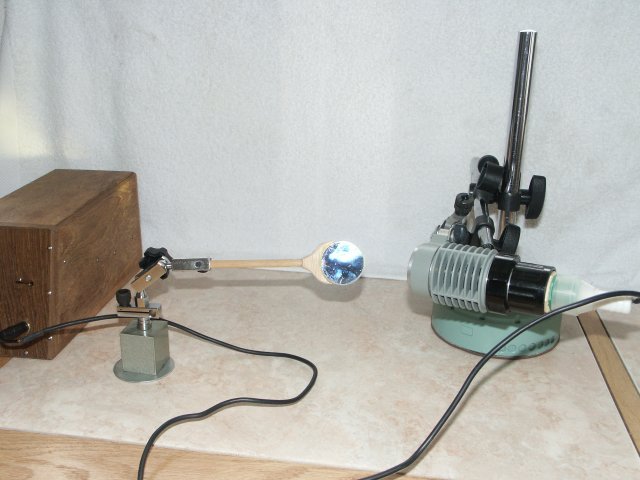
Here is the little rock; it is brown, not green at all.
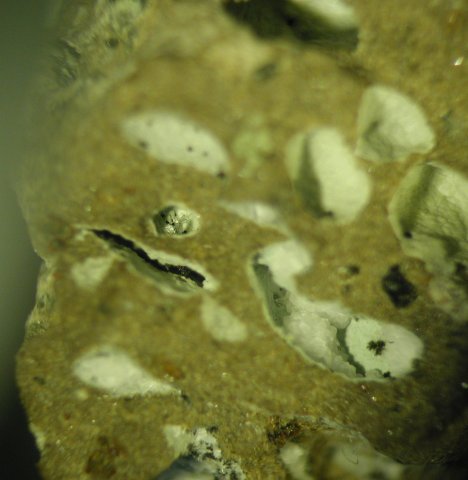
The pictures are of those crystals, but the green color is a mystery to me, I did not use any filters, or anything that could make that green color, my Olympus 3040Z made the green a little more pronounced than the Minolta 7HI did. The magnification is 115.4 X at the eyepiece; the camera may have a little different factor because of the adapter used.
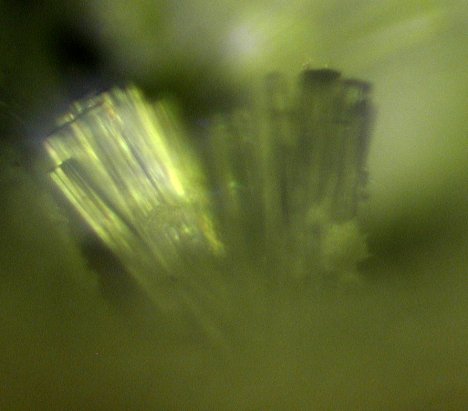
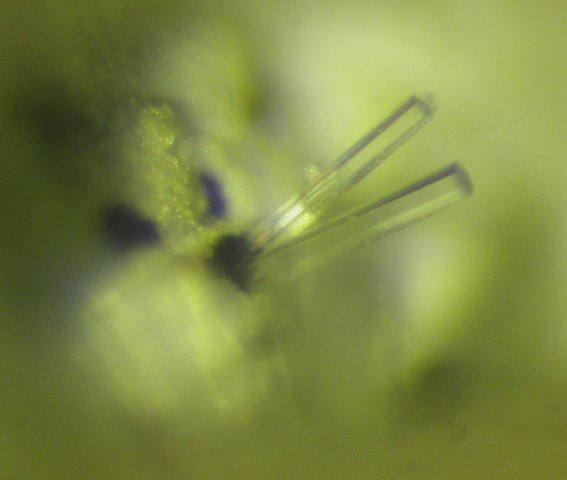
This is a stack of 3 pictures taken with the Minolta 7HI made with CombineZ5 software. You can see inside the cave here.
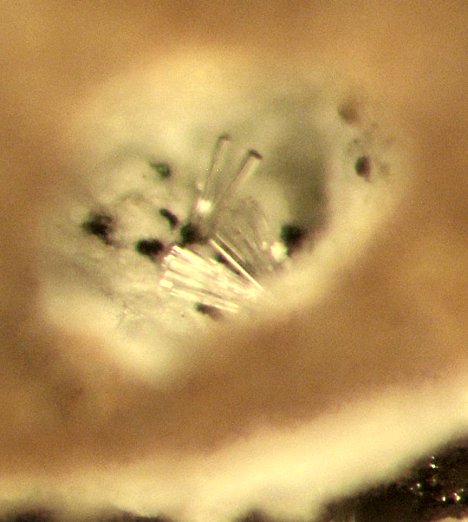
I am using the SF-2X lens to take these pictures, but the lens has a bracket with a thumb screw sticking out the side, which does not allow it to do two things; A: I cannot use my fiber optics ring light, and B: it does not sit straight on the main lens. To remedy this, I took the complete bracket off, and made a much smaller one out of aluminum with a 6/36 set screw, but now I have to use an Allen wrench versus no tools. I cut the bracket out of a piece of aluminum door frame.
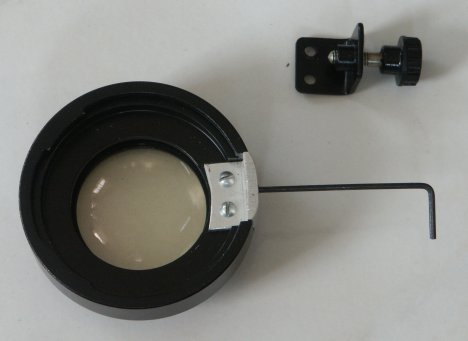
Here are the websites for the Dial calipers:
"http://www.grizzly.com/products/G9849"
or without the dial:
"http://www.grizzly.com/products/G1480"
this is the smaller holder:
"http://www.grizzly.com/products/G9624"
All comments to the author Rudolf Baumueller are welcomed.
Microscopy
UK Front Page
Micscape
Magazine
Article
Library
Please report any Web problems or offer general comments to the Micscape Editor.
Micscape is the on-line monthly magazine of the Microscopy UK website at Microscopy-UK